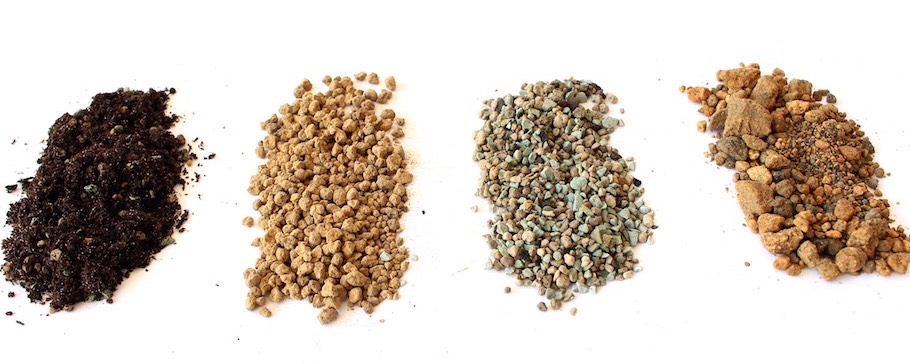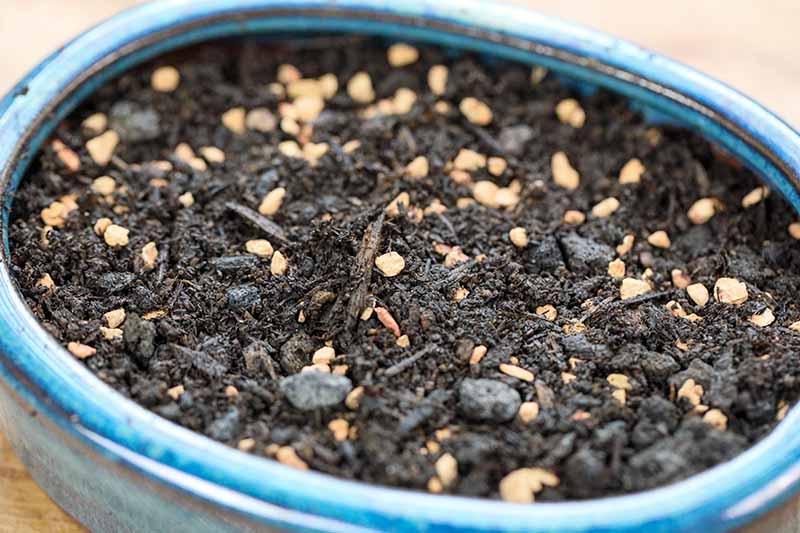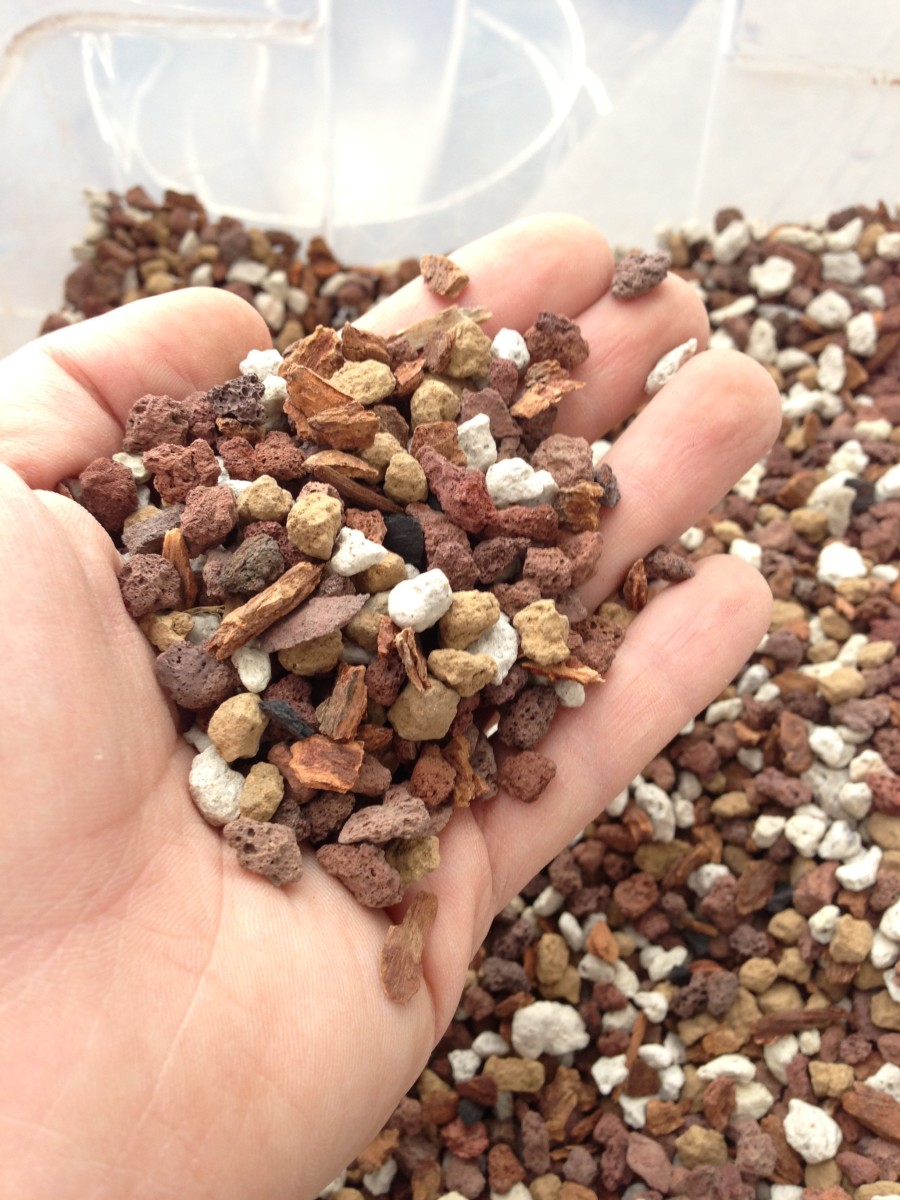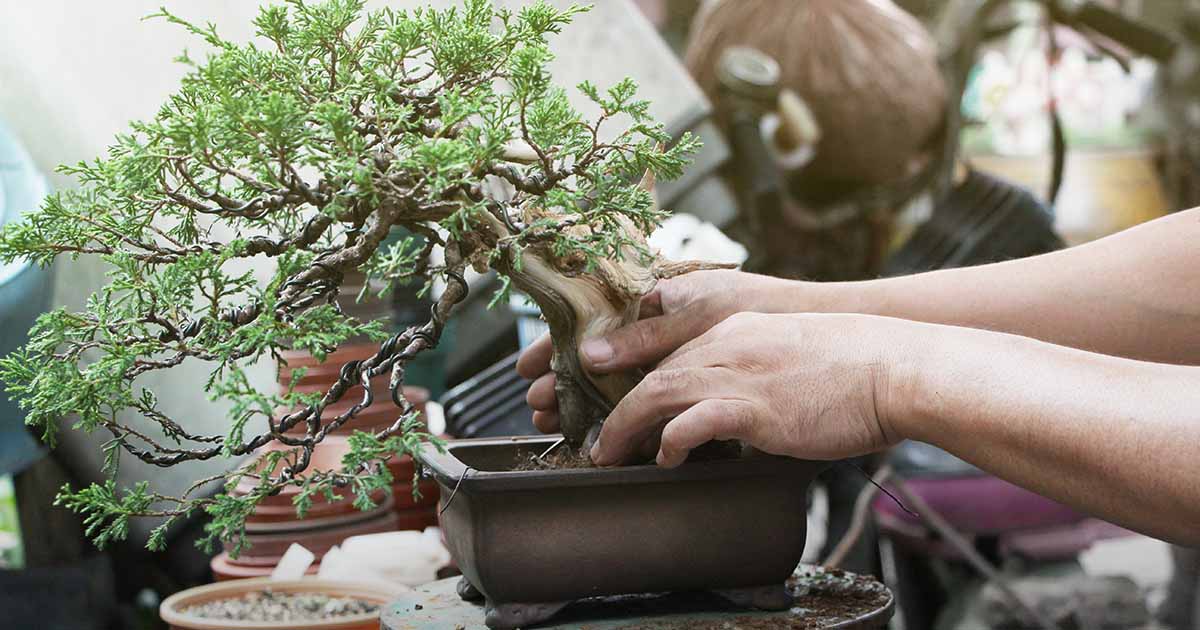In this article, we'll take a look at the different sorts of soil and substrates Employed in bonsai cultivation, which include organic and inorganic alternatives.
We'll also find recommended soil mixtures for different bonsai species, including deciduous, coniferous, and indoor kinds. From akadama and pumice to moss and river sand, we'll dive into the fascinating entire world of bonsai soil and help you realize why It can be an essential Section of cultivating these exquisite trees.

Bonsai soil
What is bonsai soil?
Bonsai soil is a specialized type of soil that is specifically formulated for growing and maintaining bonsai trees. Unlike regular garden soil, bonsai soil is well-draining and provides the necessary nutrients and moisture balance for the tree's root system. The composition of bonsai soil is carefully designed to meet the unique needs of bonsai trees, ensuring their health and longevity.
The importance of bonsai soil
The choice of soil plays a crucial role in the success of your bonsai tree. The right soil provides optimal drainage, allowing excess water to flow freely and preventing root rot. It also promotes a healthy and well-developed root system, which is essential for the overall health and growth of the tree. Bonsai soil retains moisture while allowing air to reach the roots, striking the perfect balance for the tree's needs. Choosing the right bonsai soil is essential for maintaining a healthy and thriving bonsai tree.
Bonsai substrates
What are bonsai substrates?
Bonsai substrates refer to the different materials that can be used to create the ideal soil composition for bonsai trees. These substrates are carefully chosen to meet the specific needs of different species of bonsai trees and to ensure proper water drainage and nutrient availability.
Different types of bonsai substrates
There are various types of bonsai substrates available, each with its own unique characteristics and benefits. Some common bonsai substrates include:
- Organic materials: These include ingredients such as bark, peat moss, and coconut coir. Organic substrates help retain moisture and provide essential nutrients to the bonsai tree.
- Inorganic components: These incorporate parts like pumice, lava rock, and akadama. Inorganic substrates present great drainage, ensuring that extra drinking water doesn't accumulate around the roots of the bonsai tree.
- Soil amendments: These are substances that are additional for the soil mixture to enhance its Attributes. Examples of soil amendments include perlite, vermiculite, and sand. They improve the soil's aeration, water-holding potential, and nutrient availability.
By comprehension the different types of bonsai substrates and their properties, you could choose the most suitable just one for your bonsai tree's desires.
Organic and natural or Inorganic Soils
Organic and natural soils for bonsai
Organic soils for bonsai are made up of all-natural supplies like bark, peat moss, coconut coir, and compost. These products provide a prosperous source of nutrients to the bonsai tree and encourage healthier root advancement. Organic soils even have fantastic h2o retention Homes, ensuring which the tree gets ample dampness amongst watering classes. Even so, it is vital to notice that natural and organic soils may well break down after some time and come to be compacted, resulting in poor drainage and possible root challenges.
Inorganic soils for bonsai
Inorganic soils for bonsai include materials like pumice, lava rock, akadama, and soil amendments like perlite or vermiculite. These supplies have great drainage properties, blocking waterlogged soil and marketing aeration within the roots. Inorganic soils are chosen by many bonsai lovers due to their longevity and talent to provide a secure atmosphere for that bonsai tree's root program. However, They could need a lot more Recurrent watering and additional fertilization, as they do not hold just as much moisture or nutrients as organic and natural soils.
Positives and negatives of applying natural and inorganic soils for bonsai
Choosing concerning natural and inorganic soils in your bonsai tree depends upon a variety of things, such as the certain species of tree, your weather, and private preferences. Here i will discuss the positives and negatives of each:
Organic soils:
- Professionals: Provide nutrients, excellent drinking water retention, endorse wholesome root enhancement.
- Cons: May possibly stop working over time, prospective for lousy drainage Otherwise appropriately taken care of.
Inorganic soils:
- Professionals: Exceptional drainage, long-lasting, steady natural environment for roots.
- Downsides: Significantly less drinking water retention, may well require much more Regular watering and fertilization.
By taking into consideration the pluses and minuses of both natural and inorganic soils, you can also make an knowledgeable determination based upon the precise demands of your bonsai tree.
Soil elements
Crucial elements of bonsai soil
Bonsai soil is usually made up of a few most important elements: grit, natural issue, and clay. These parts get the job done jointly to create the ideal soil more info construction to the bonsai tree's root technique.
- Grit: Grit, for instance sand or perlite, delivers drainage and aeration from the soil. It can help avoid waterlogging and allows air to get to the roots.
- Organic matter: Organic matter, such as compost or bark, supplies nutrients to your bonsai tree. In addition it allows keep humidity and Enhance the soil's Total composition.
- Clay: Clay particles give some h2o retention traits and enable bind the soil jointly. Even so, excessive clay may result in poor drainage and compaction.
Part of every soil part
Each individual soil part plays a vital function in making a effectively-balanced and healthy environment for your bonsai tree's roots.
- Grit: Grit gives the mandatory drainage and aeration from the soil. It prevents the roots from sitting down in stagnant h2o, cutting down the risk of root rot and marketing Over-all root health and fitness.
- Natural matter: Natural and organic subject supplies vital nutrients on the bonsai tree. It aids in humidity retention and contributes to the general structure in the soil.
- Clay: Clay particles enable bind the soil together and provide some water retention capability. However, it's important to balance the quantity of clay to prevent troubles like lousy drainage and compaction.
By comprehending the roles of each and every soil part, you'll be able to create a well balanced bonsai soil mix that fulfills the particular requirements of your tree.

Recommended Bonsai soil mixtures
Common bonsai soil mixtures
There are several common bonsai soil mixtures that have been proven effective for various types of bonsai trees. These mixtures typically consist of a combination of inorganic substrates, organic matter, and soil amendments.
Some of the commonly used bonsai soil mixtures include:
- Akadama, pumice, and lava rock: This mixture is popular among bonsai enthusiasts for its excellent drainage and water retention properties.
- Akadama, lava rock, and organic issue: This mixture brings together the advantages of inorganic substrates Together with the nutrient-wealthy Attributes of organic subject.
- Pumice, perlite, and bark: This combination offers superior drainage and aeration although retaining some humidity and giving nutrients.
They are just some samples of bonsai soil mixtures, and The perfect combination will count on the precise wants of the bonsai tree along with your climate.
Factors to take into account when picking a bonsai soil mixture
When deciding upon a bonsai soil combination, it's important to consider the next elements:
- Species of bonsai tree: Unique species have different humidity and nutrient necessities. Exploration the particular demands of the tree to pick out a soil combination that meets its demands.
- Local climate: The local climate you reside in can affect the humidity retention Houses on the soil. Take into account the typical humidity and temperature in your area when choosing a soil mixture.
- Watering patterns: Your personal watering practices and regimen must align While using the soil mixture you choose. Some mixtures have to have far more Recurrent watering, while others retain humidity for more time periods.
- Finances: Some soil components could possibly be costlier than Other individuals. Take into consideration your budget when deciding on a soil combination.
By getting these elements into account, you can choose a bonsai soil mixture that provides the best growing circumstances to your tree.
Deciduous Bonsai soil
Greatest soil composition for deciduous bonsai
Deciduous bonsai trees, for example maple or birch, have precise soil specifications to help their development and overall health. The top soil composition for deciduous bonsai generally features a mix of organic make a difference, inorganic substrates, and soil amendments.
A advised soil composition for deciduous bonsai could incorporate:
- Akadama: Offers great h2o retention when letting for drainage. Additionally, it releases nutrients slowly over time.
- Pumice: Promotes aeration and drainage within the soil, blocking waterlogging.
- Bark or peat moss: Provides natural and organic issue on the soil, furnishing nutrients and moisture retention.
This soil composition makes sure that the roots of deciduous bonsai trees receive the best equilibrium of moisture, nutrients, and oxygen for best progress.

Coniferous and Pine soil
Ideal soil mixture for coniferous and pine bonsai
Coniferous and pine bonsai trees have specific soil requirements due to their water retention needs and preference for acidic soil. An ideal soil mixture for coniferous and pine bonsai should provide good drainage while retaining moisture and maintaining the desired pH level.
A recommended soil mixture for coniferous and pine bonsai may include:
- Akadama: Provides excellent water retention while allowing for sufficient drainage. It releases nutrients slowly over time.
- Pumice: Promotes aeration and drainage inside the soil, blocking waterlogged roots.
- Peat moss: Provides natural matter and acidity to the soil, creating a super pH stage for coniferous and pine trees.
This soil combination makes sure that the roots of coniferous and pine bonsai trees receive the best balance of humidity, nutrients, and acidity for their precise wants.
Akadama
Precisely what is akadama?
Akadama is a type of clay soil that's extensively used in bonsai cultivation. It is actually known for its outstanding water retention Houses, which make sure a gentle source of humidity for the bonsai tree's roots. Akadama is additionally prized for its power to launch nutrients little by little over time, delivering a reliable source of nourishment with the tree.
Benefits of applying akadama in bonsai soil
Making use of akadama in bonsai soil presents quite a few Rewards:
- H2o retention: Akadama has Remarkable drinking water retention properties, allowing for it to carry humidity without turning out to be waterlogged. This ensures that the bonsai tree's roots get a steady source of water, promoting healthful advancement.
- Nutrient launch: Akadama bit by bit releases nutrients in the soil with time, providing a reliable source of nourishment for that bonsai tree. This lessens the need for Recurrent fertilization and will help preserve a well balanced nutrient profile.
- Aeration: Even with its drinking water retention capabilities, akadama also supplies ample aeration towards the bonsai tree's roots. It allows air to reach the root program, preventing difficulties including root rot on account of deficiency of oxygen.
By incorporating akadama to the bonsai soil, you are able to create an best growing ecosystem on your tree, guaranteeing its wellness and vitality.

Lava rock
How lava rock benefits bonsai soil
Lava rock is a popular component in bonsai soil mixtures due to its excellent drainage and aeration properties. It is typically used in conjunction with other substrates to create the ideal soil composition for bonsai trees.
The benefits of lava rock in bonsai soil include:
- Drainage: Lava rock provides excellent drainage, preventing waterlogging and ensuring that excess water flows freely through the soil. This helps prevent root rot and provides a healthy environment for the roots to thrive.
- Aeration: The porous nature of lava rock lets air to circulate within the soil, providing oxygen on the bonsai tree's root method. Correct aeration is crucial for healthier root improvement and Over-all tree growth.
- Longevity: Lava rock is often a strong product that doesn't stop working effortlessly. This ensures that the soil construction stays steady after some time, reducing the need for Recurrent soil replacements.
Lava rock is accessible in several dimensions and designs, enabling for personalisation according to the particular demands of one's bonsai tree and soil requirements.
Differing kinds of lava rock
You will find different types of click here lava rock which can be used in bonsai soil mixtures, together with:
- Black lava rock: Black lava rock is really a normally employed materials in bonsai soil mixtures. It offers excellent drainage Qualities and provides an aesthetic ingredient to the overall presentation in the bonsai tree.
- Purple lava rock: Pink lava rock is yet another well-liked selection in bonsai soil mixtures. It provides related drainage and aeration Rewards as black lava rock but has a definite reddish shade that provides visual desire on the container.
Each black and purple lava rocks are widely obtainable and may be quickly included into your bonsai soil combination.
Potting
Critical tips for productive bonsai potting
Potting is actually a critical approach in bonsai cultivation, since it right impacts the health and improvement in the tree's roots. Here are a few vital tricks for thriving bonsai potting:
- Choose the suitable pot sizing: Decide on a bonsai pot that enables for root expansion when however furnishing a cosy healthy. Stay clear of pots which are far too massive, since they may result in abnormal soil dampness and very poor root growth.
- Use bonsai wire: Safe the tree inside the pot making use of bonsai wire to make certain balance. This helps prevent the tree from shifting or getting to be uprooted for the duration of watering or sturdy winds.
- Trim and unfold the roots: Just before potting the bonsai tree, very carefully trim and spread out the roots. This encourages outward growth and prevents root tangling or root-bound difficulties.
- Insert mesh screens: Spot mesh screens more than the drainage holes at The underside of your pot to circumvent soil erosion and be certain right drainage.
- Use contemporary bonsai soil: When potting, constantly use refreshing bonsai soil to supply the necessary nutrients and exceptional rising disorders for the roots.
By following these critical recommendations, you may guarantee An effective potting procedure and advertise the general well being and advancement within your bonsai tree.
The purpose of bonsai pots in soil dampness Manage
Bonsai pots play an important part in soil humidity Management, specifically impacting the wellness and growth of your tree. Bonsai pots are usually shallow and also have drainage holes, allowing excessive drinking water to escape and avoiding the soil from getting waterlogged.
The look of bonsai pots encourages evaporation and air circulation, which aids regulate soil humidity levels. The shallow depth and wide opening with the pot expose far more surface area on the soil for the air, aiding in moisture evaporation. This stops the roots from sitting in excessively damp soil, lowering the risk of root rot and other drinking water-related challenges.
Moreover, the drainage holes in bonsai pots make it possible for any extra water to escape, protecting against waterlogged soil and marketing aeration around the roots. Appropriate aeration is essential for the health and growth of the foundation process, making sure the bonsai tree receives the mandatory oxygen for development.
By making use of bonsai pots designed for effective humidity Management, you can make a favorable environment for the bonsai tree's roots and promote its Total health and vitality.
In conclusion, deciding on the correct bonsai soil is important to the success and overall health of your bonsai tree. Knowing the different types of bonsai substrates, the job of natural and inorganic soils, The crucial element elements of bonsai soil, and the different recommended soil mixtures can assist you supply the best growing situations for your personal bonsai tree. No matter whether you have a deciduous or coniferous bonsai, incorporating components like akadama and lava rock can enrich the soil's drainage and nutrient availability. Additionally, taking note of potting approaches and utilizing bonsai pots created for humidity control will additional assist the flourishing advancement of the bonsai tree. With right being familiar with and implementation of bonsai soil practices, you are able to benefit from the beauty and artistry of bonsai cultivation For a long time to come back.
